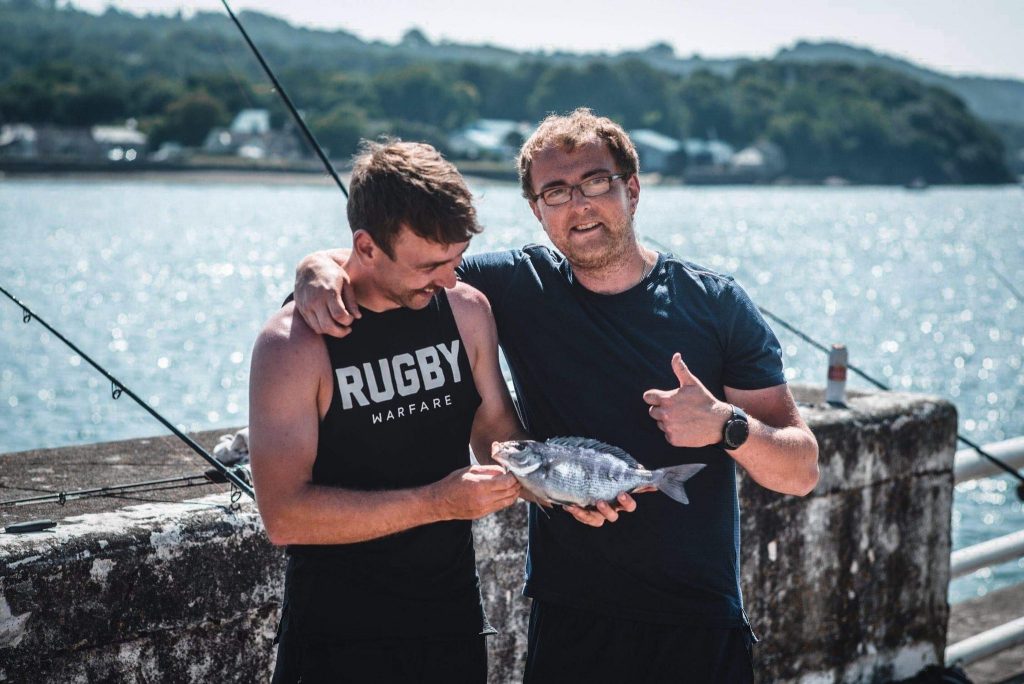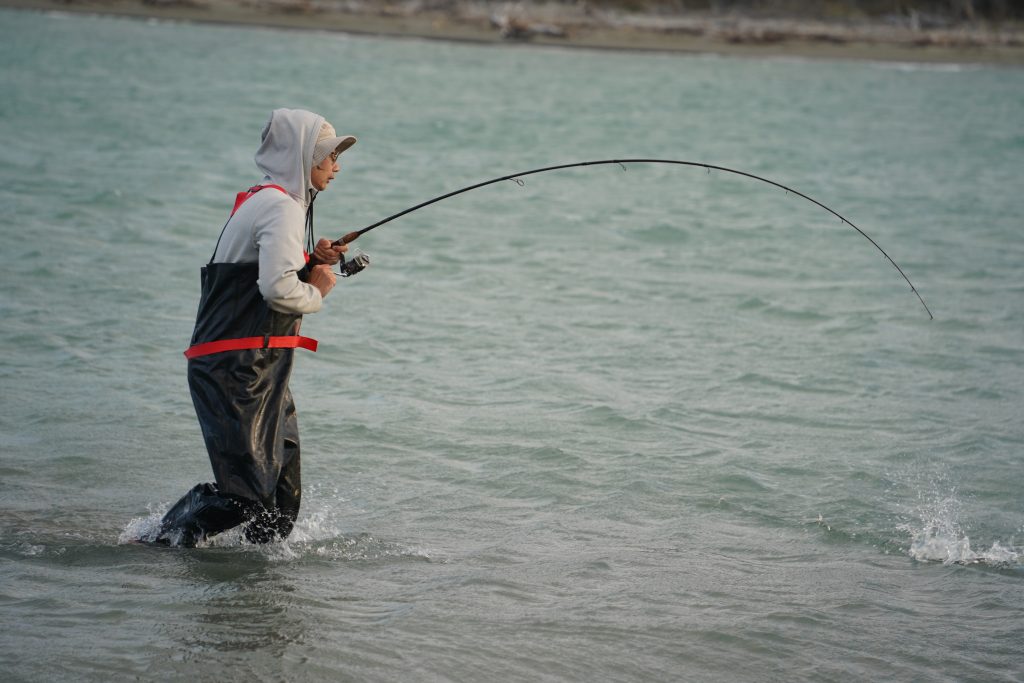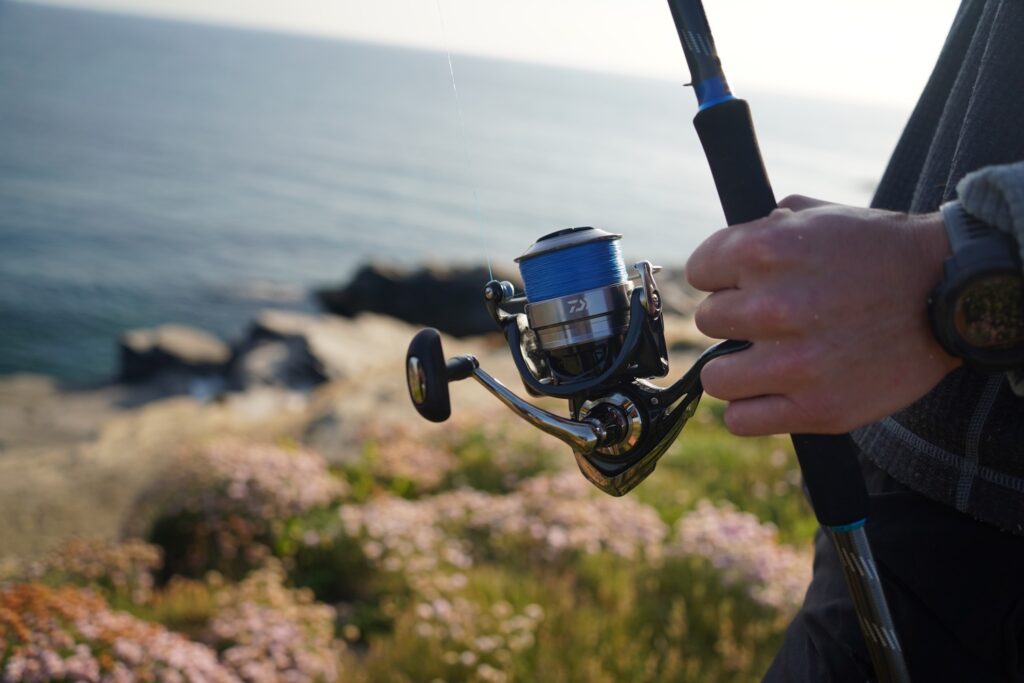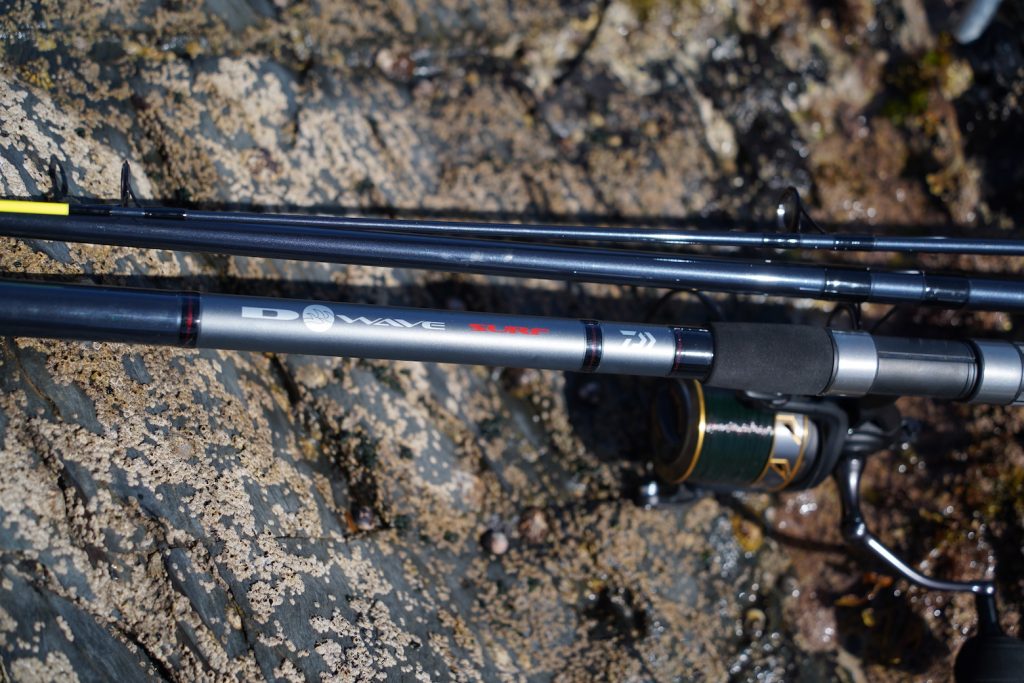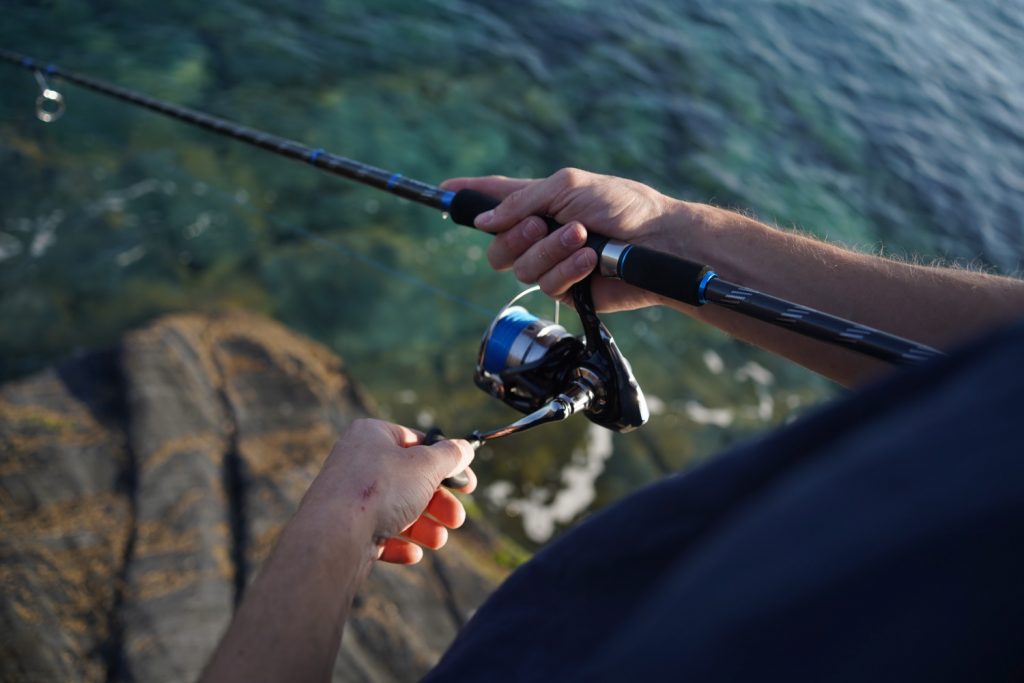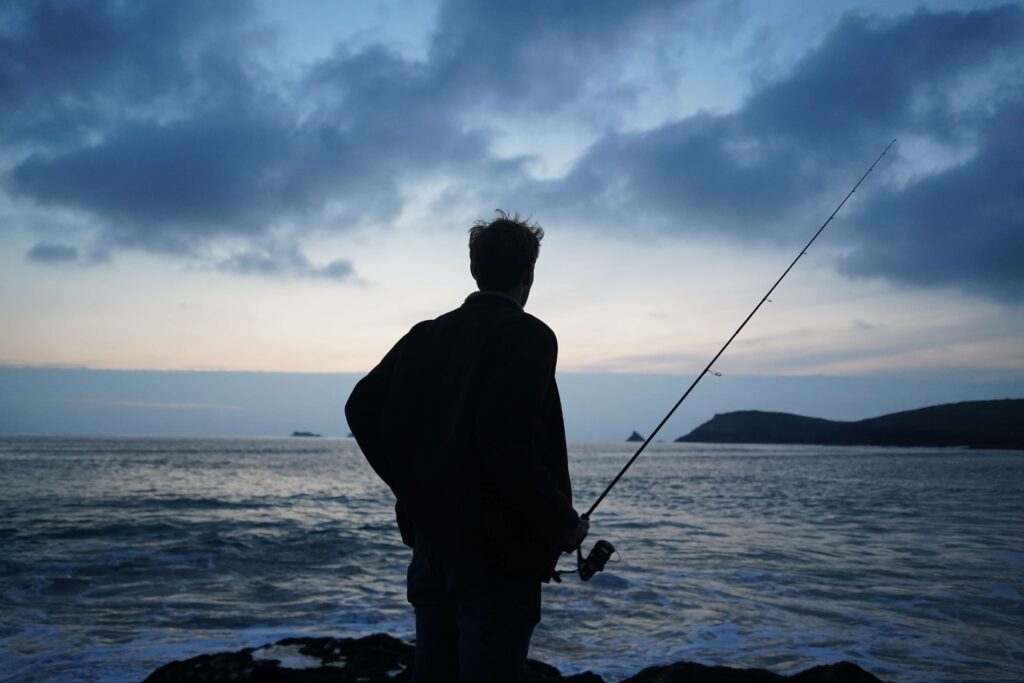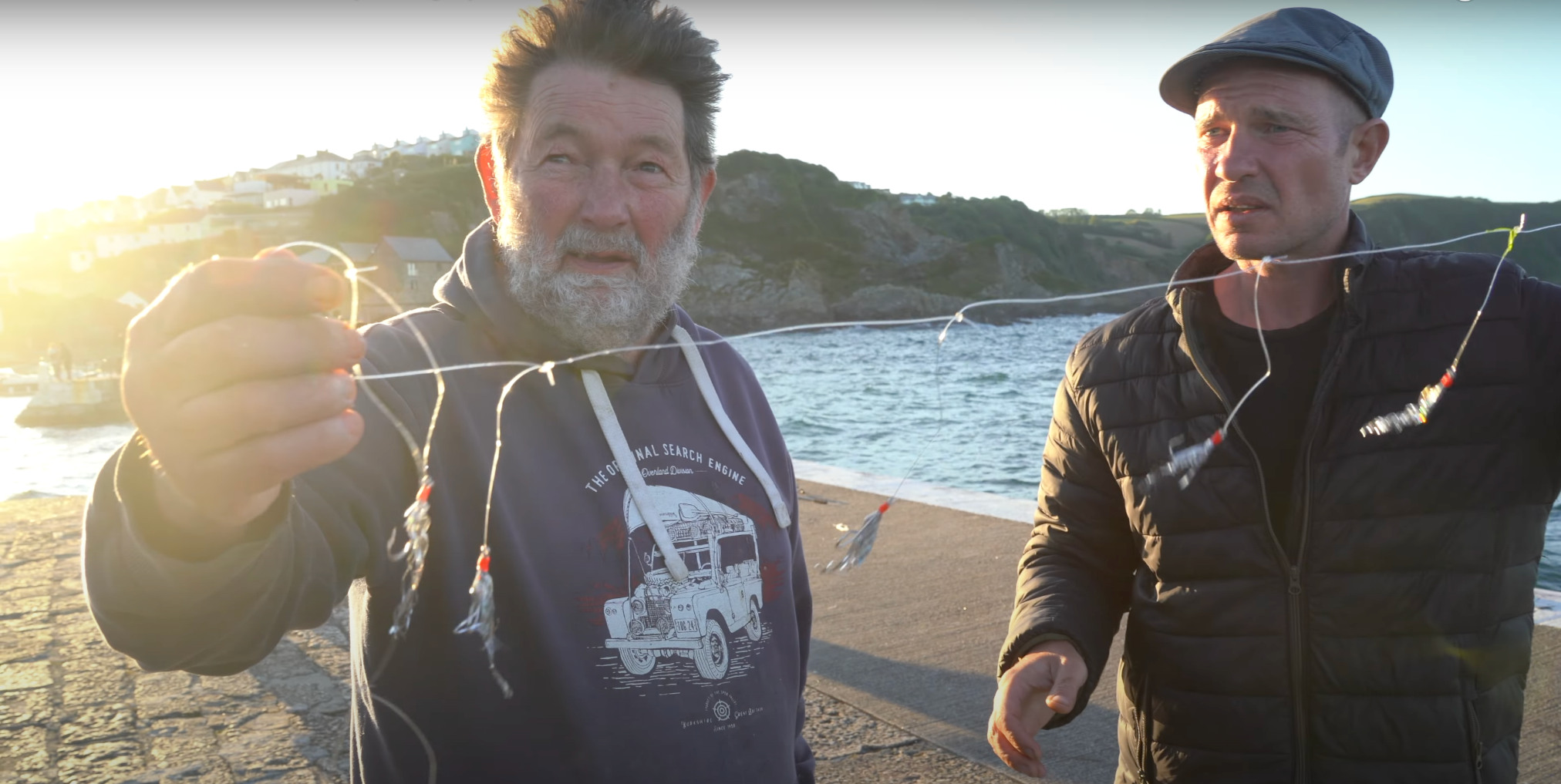
The best mackerel feathers & lures
In this article, I will highlight some of the best deals on mackerel spinners and feathers online. We will begin with the highest quality options and work our way towards popular but less effective lures down the page to show what to avoid.
There are two types of mackerel lures; feathers for catching mackerel four at a time and spinners, which include wedges, spoons and other types of metal lure. We recommend using feathers if your rod casts over 2oz (56g), and spinners if your rod casts under that. Your rod has its maximum casting weight written on it.
FISHMAG is an Amazon Affiliate and earns from sales.
There is a common misconception that lure choice is not important for mackerel, because they are easy to catch when they’re around. This is somewhat true, but casting distance, the speed the lure falls and how much it flashes do make a significant difference. Most anglers on harbours are not using the best lures they could be to maximise results.
It’s good to have a few different weights and a few back ups, as snagging up is common, especially if you’re a holiday angler and are unfamiliar with the ground you’re fishing. If you are experienced, I recommend buying a variety of jigs, including high end slow jigs for clean ground (favoured by other species) and cheaper jigs for snaggy ground (less painful to lose to snags!).
There are quite a few links here, but if you carry on down the page I explain the different types in more detail along with when you might like to use each variety.
Mackerel feathers:
Classic mackerel feathers, available here
Sabiki feathers for catching bait, available here and here
Silver shrimp (most popular), available here
Torpedo leads bulk deal, from here
Best spinners:
Premium slow jigs for shore or boat here
Best value casting jigs for snaggy ground, available here
Classic dexter wedge with best hook size, available here
Avoid toby spoons and unweighted spinners, this instead
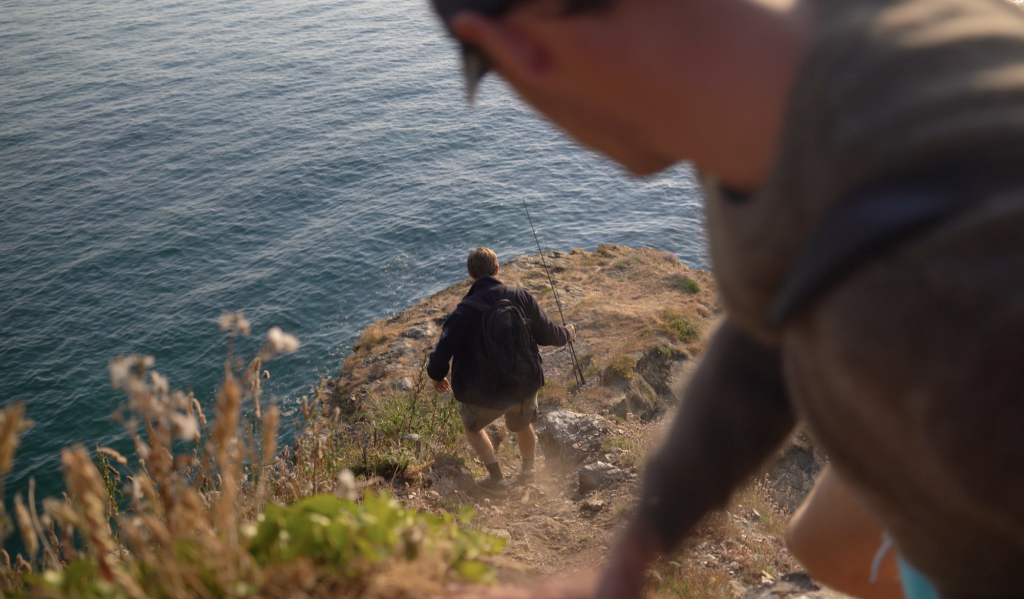
Common mistakes when choosing mackerel lures
1) Using mackerel feathers over shallow rough ground results in immediate snags
2) For maximum casting distance, use spinners that weigh about 3/4 of your rods max (written on side of rod)
3) Choose spinners with smaller treble hooks like the ones linked below as mackerel have small mouths
4) Spinners that are shiny outperform those that are merely coloured because they are more visible in low light
5) If you can tie a leader knot, use braid for much further casting
6) Whatever lure you choose, make sure you fish the full depth of the water not just one depth
Best mackerel feathers
The mackerel feathering rig is a string of 4-6 feathers that are tied directly to your mainline. You tie one end of the feathers to your line with a strong knot like the blood knot. Then, you attach a lead weight to the other end. Commercial mackerel feathers are no different – the commercial guys just use hundreds of hooks instead. They used to be made from chicken feathers, which is where they get their name.
Classic good value mackerel feathers, from amazon or veals
Excellent price on torpedo leads, from amazon
You can also get ‘silver shrimp’ which are mackerel feathers made from tinsel that flash in the water or glow-in-the-dark feathers for fishing at night for other species, like scad mackerel. Feather rigs for mackerel are so named because they used to be made from chicken feathers. You can still buy feathers like this, or make your own DIY feathers at home.
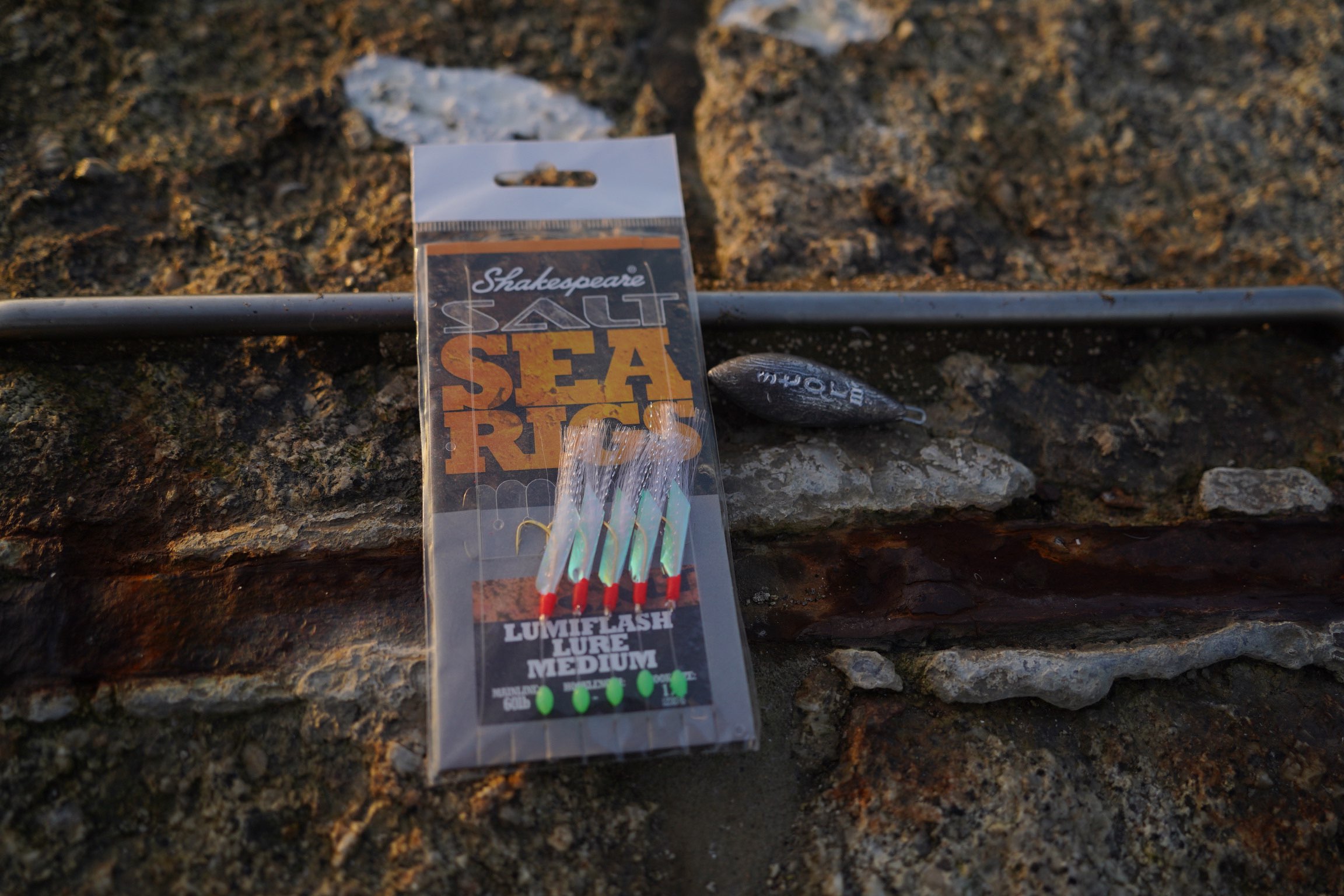
1. Sabiki Mackerel Feathers
Sabiki feathers get more hookups than regular feathers because they have smaller hooks, which are better designed for the relatively small mouths of mackerel.
There are two main types of mackerel feathers that are used in the UK, regular mackerel feathers with size 1/0 hooks, and Sabiki feathers which have smaller hooks. If you use Sabiki feathers you will catch more fish, whereas using the regular feathers will help you filter out some of the smaller mackerel. This is because mackerel have relatively small mouths, and size 1/0 hooks on regular feathers are at the upper limit of the size hook you want to use.
Sabiki feathers with strong line, on veals
Sabiki feathers deal, on amazon
Sabiki feathers sometimes come with much lighter lines, so you need to avoid heavy weights if you buy ones like that. If you buy the Sabiki’s linked above, they have 30lb mainline so you’re good to go even with heavier leads.
2. Silver Shrimp Mackerel Feathers
Silver shrimp are feathers made from tinsel. Unlike regular feathers, they shine, which helps them imitate baitfish and sandeel more realistically and attract mackerel in murky or clouded water.
Silver shrimp are a personal favourite for many anglers because they imitate baitfish more effectively than regular feathers. In bright conditions, they really do shine and are much more visible than blue, green or red feathers. When water clarity is poor I would favour them for mackerel over Sabiki’s due to their larger size, as well as the flash.
Their name suggests they are intended to imitate shrimp, but they do no such thing. How many anglers retrieve these along the bottom? Only those fishing for species other than mackerel, that tip the feathers with worms or mackerel strips to target other species, such as members of the cod family. This can be highly effective, especially when boat fishing with feathers.
Silver shrimp, available here
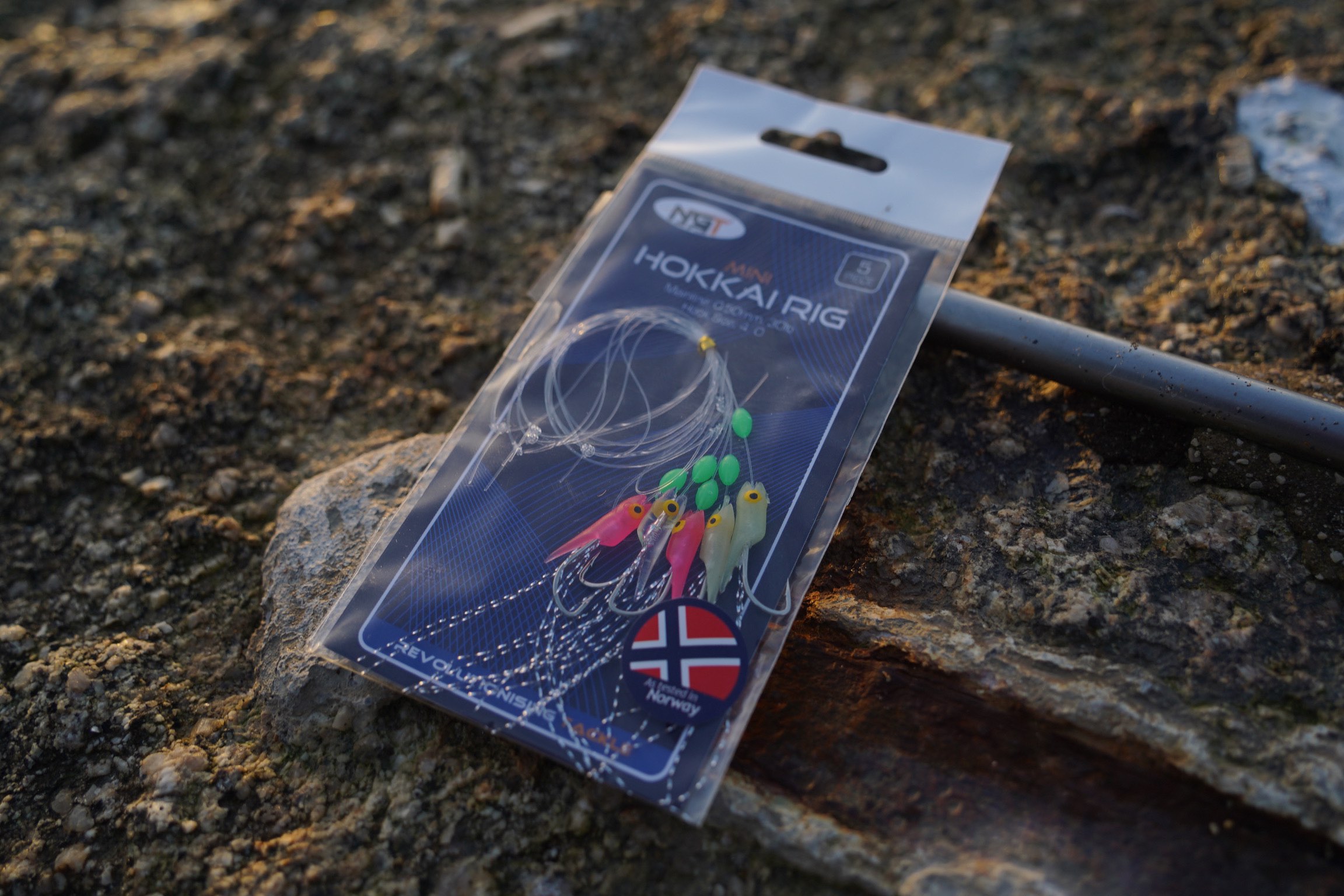
3. Hokkai Feathers
What are Hokkai feathers? They’re a string of feathers that have fish head designs on the hook so that they look more like a shoal of fish. The idea is that they’re better for tempting species that are harder to catch than mackerel and that favour a more natural presentation.
Watch out when buying hokkai feathers for mackerel fishing because they often come with far larger hooks than regular feathers, for targeting for members of the cod family while boat fishing. For mackerel feathering, you want hooks no larger than size 1/0, which is why I recommend the hokkai feathers above if you want to increase your chances of catching species other than mackerel, while catching mackerel too.
Hokkai feathers with smaller size 1/0 hooks, here
Best mackerel spinners
Metal lures are the best mackerel lures overall because they cast further than soft plastics and sink faster. Perfect for flinging to the horizon when the fish are just beyond the usual casting distance and seeking out these pelagic fish. They also get better hookups than soft plastics.
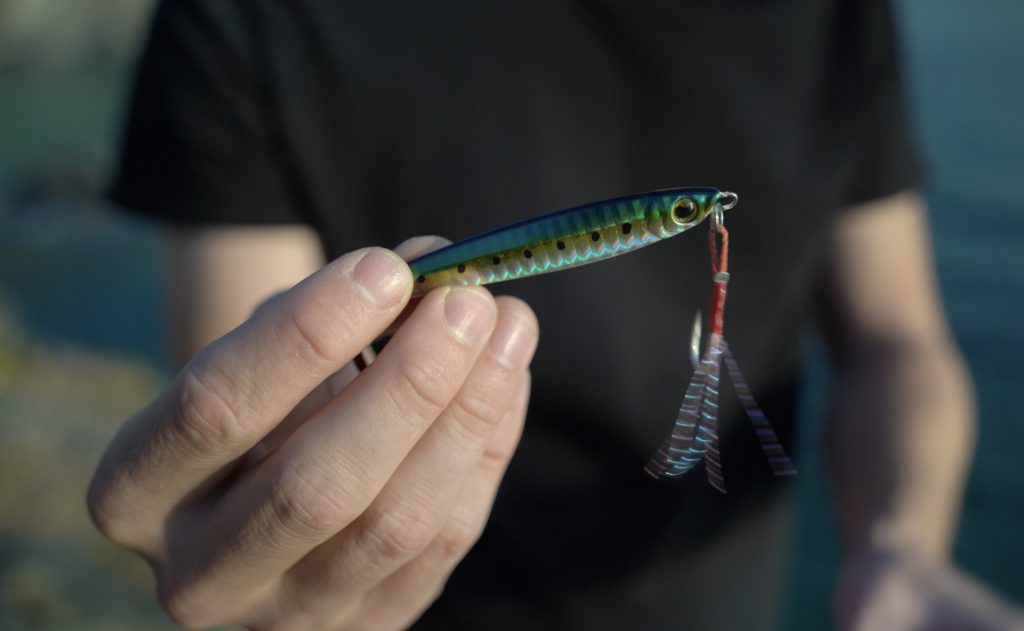
1. Casting jigs 7 – 30g
Perfect for when you need a long casting distance and a fast sinking lure.
Metals will give you the distance you need when fishing from beaches, harbours or rock marks, and jigging with them around the mouths of estuaries is a popular method for a variety of species.
When it comes to choosing the best casting jigs for mackerel, you need to know what the best weight is for the casting weight of your rod. On an LRF rod, 7g casting jigs cast well but for most anglers, a 30g casting jig (1oz) is needed. Silver is the best colour for mackerel – as long as the lure creates flash you’re good. High-end casting jigs look much fancier, but their real benefit is actually the way they fall in the water and the hook quality, not the way they look. More expensive slow jigs flutter as they fall, making them more visible and getting more hits on the drop, particularly from other species which are harder to tempt.
When to use metals for mackerel
Metals are essential when a very long cast is required, especially in windy conditions. They work best over clean ground because they typically have treble hooks on the bottom which are more prone to snagging on rough ground unless retrieved quickly. They are extremely effective for mackerel fishing and a number of other species. They do not catch as many bass as larger soft plastics and plugs.
High end casting jigs, available here
Budget silver casting jigs, here
Mid-range casting jigs, I use for rough ground, here
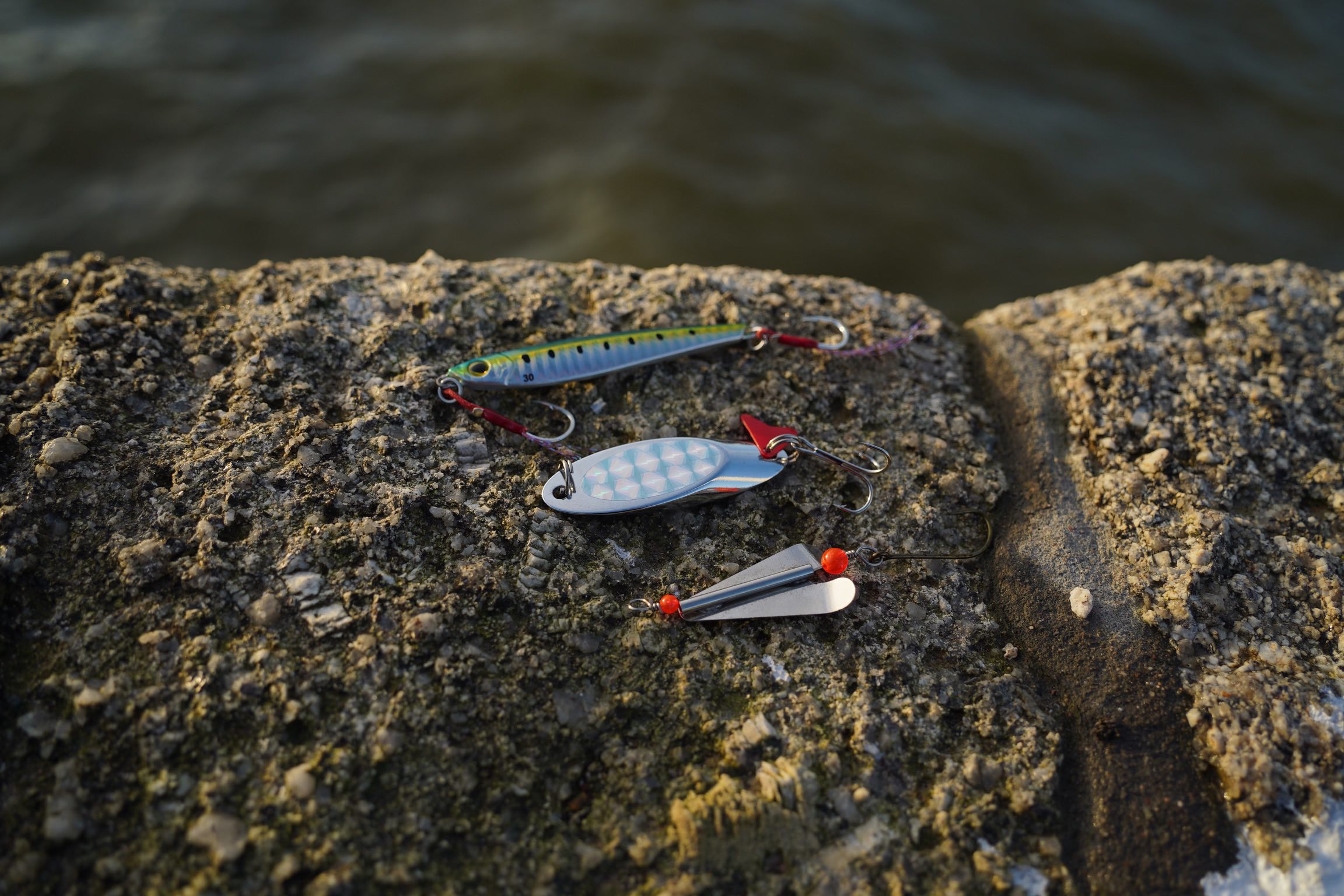
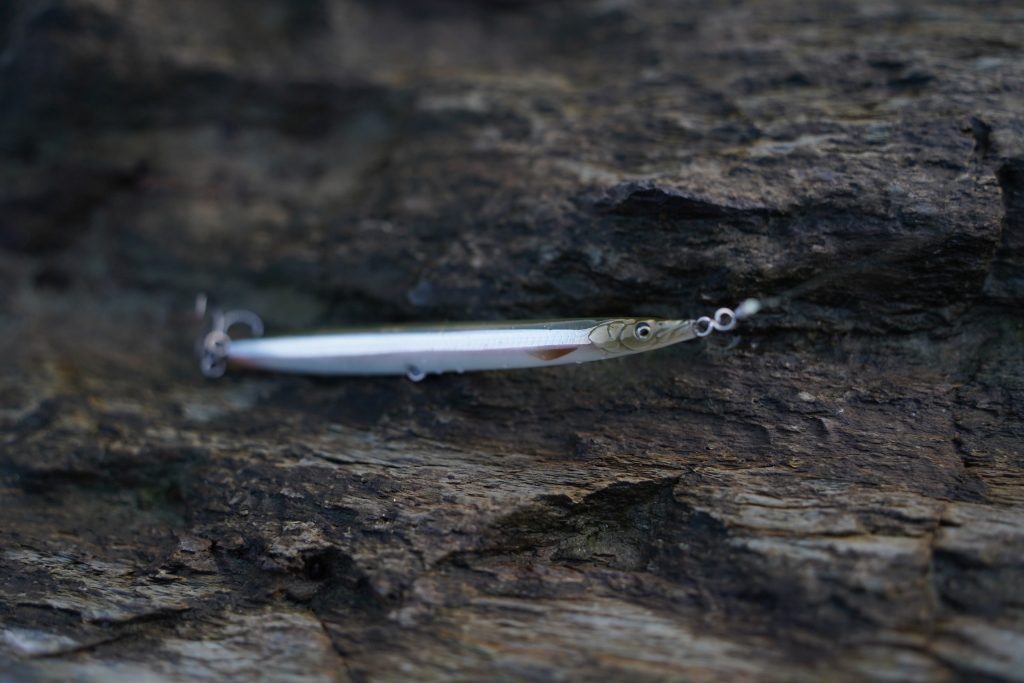

2. Dexter Wedge
A low-cost, classic mackerel lure that also works for schooly bass in larger sizes.
The Dexter wedge is a classic mackerel lure and a go-to for many anglers. They are extremely effective, cast very well and fall quite quickly, which makes them practical for covering lots of water and seeking out fish wherever they are. Watch out as they do snag very easily over rough ground.
Also note that most wedges come with large treble hooks which are designed for species like bass and pollack, which engulf lures by opening a vacuum in their large mouths. Even in those larger sizes, you will catch mackerel, but you won’t get as many hookups as you will with slightly smaller hook sizes.
Recommended wedge, on veals
Bog standard decent wedges, on amazon
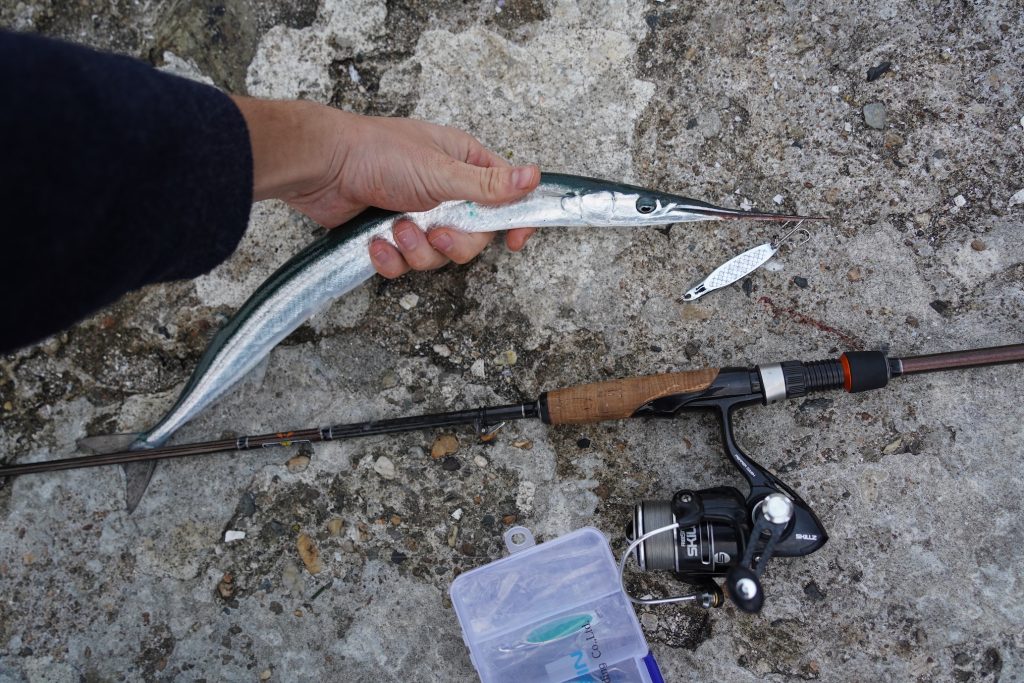
3. Mackerel Spoons & Toby Spoons
Spoons used to be a good cheap lure but now there are better alternatives at the same cost. Save em’ for grandpa’s Christmas stocking!
Sometimes referred to simply as a ‘toby’, the toby spoon is the most famous of the spoons, named because they used to be made from teaspoons. They have a more elongated body than a spinner, which gives them an advantage for bass. They were designed by Abu Garcia for trout fishing in Scandanavia to imitate the Tobis fish – a little slender minnow. Due to the larger flat surface of a toby spoon compared to other metal lures, they fall more slowly in the water and create a lot of movement. This is a classic lure often used by anglers seeking to stick to their roots.
Spoons have been proven effective for over 400 years. They work and are often a lower-cost option than fancier modern lures. However, they just aren’t as good as casting jigs which are now available at far lower prices than they used to be. Casting jigs cast better in the wind, fluttering down the water column more slowly and more like a dying fish and the hooks that come with them are much higher quality.
Instead of buying a spoon, get a long-bodied wedge
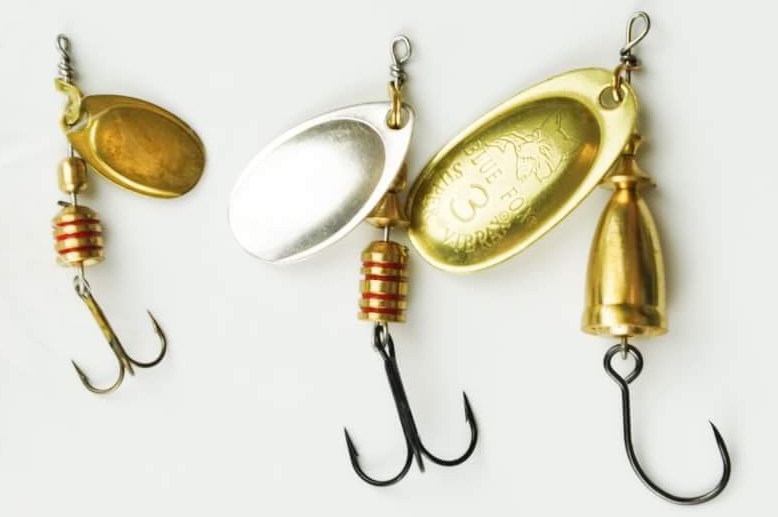
4. Mepps Aglia – Good for Sentimental LRF’ers
Attractive spinners, but not great for mackerel fishing from shore due to having a limited casting distance compared to alternatives.
A true spinner, like the Mepps-style lure pictured here, has a metal blade that spins around the shank of the lure as it’s retrieved. This creates a rapid flashing action that attracts fish. If you reach for one of these, go for one that weighs at least 7g and not more than 30g. In the larger sizes, the hooks will become too big for mackerel, and in the smallest sizes, they are impractical as they don’t cover much distance and fall too slowly for seeking out mackerel quickly.
Many popular spinning rods used in the UK are too heavy to cast a small spinner effectively. Therefore, don’t use spinners like these unless you have a rod that casts no more than 30g. If you have an LRF rod, then a Mepps spinner is a cracking lure to play around with for mullet, and they provide good resistance too for maintaining tension in your line and bite detection. This only works with ultra-light lure rods. They appeal to the side of anglers that wants to go back to the classic approaches they have abandoned in favour of modern tackle. What good is it to gain the whole world of fishing lures but forfeit your soul?
Grab a good wedge instead of a spinner for better casting distance
One last note on casting jigs then we’ll move on…
Casting jigs are the best modern lure for targeting mackerel by far. Why? They cast better than anything else – even the dexter wedge. That’s because they have a more slender profile that minimises air resistance and flies like a bullet. The more expensive ones are designed to flutter as they fall, so they don’t sink too quickly. This creates an impressive visual display that looks like a falling dying fish. The cheap ones work fine for standard sink and draw fishing from the shore.
Casting jigs were originally designed by the Japanese. They are designed for jigging from boats, which is a method whereby you fish directly down the side of the boat, lift up the rod sharply and then allow the lure to flutter down towards the seabed again. The method is effective because it allows your lure to spend a higher percentage of its time falling downwards, rather than being pulled at an angle. Fish are more likely to strike when the lure is falling.
They are perfectly suited to spinning from harbours and or rock fishing over clean ground for mackerel, and they come in every size for whatever casting weight you like to fish with.
These jigs have a more realistic presentation than other metal mackerel lures like wedges or spoons. Many of them come with designs that imitate fish more accurately, which means you will get more hookups from other species that are more discerning than the mackerel.
If you don’t know exactly what size spinner to get for mackerel, this pack includes a few different sizes so you can experiment.
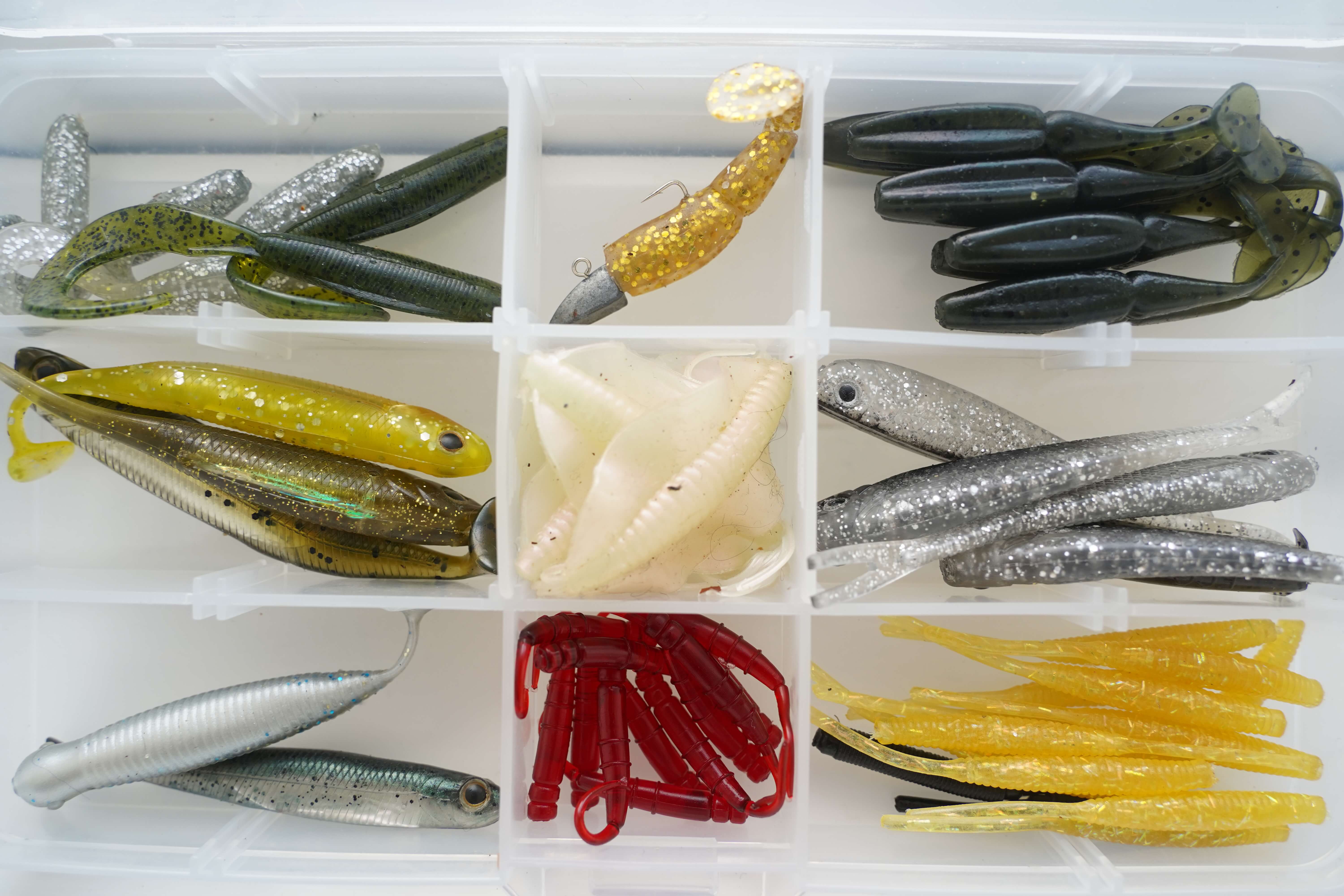
Soft plastics & jig head rigs for mackerel
The art of presenting soft plastics just right on a perfectly weighted jig head holds a lot of appeals. It gives you the freedom to try different colours, sizes, weights and lure movements until you crack the puzzle and hit the fish. It also allows you to target a far broader range of species. A lot of less impulsive species won’t go anywhere near standard mackerel feathers. It’s very rare to see bass caught on feathers, and extremely rare for big bass to be caught with them. Soft plastics provide the answer.
However, as mentioned, mackerel will snap at lures which means it usually takes multiple attacks until you get a hook-up with soft plastics. This effect is more pronounced as lures increase in size. So, it’s a trade-off, do you want to target a larger range of species but reduce somewhat the number of mackerel you hook? Sometimes you’re happy to catch mackerel but would like to increase your odds of something more bigger or more interesting. In that situation, reach for soft plastics. If you want to filter through mackerel, use soft plastics of 4″ or more with hooks over size 1/0 and you’ll stop hooking so many!

5. Paddle tails for mackerel
The most popular paddle tails on the market are the Fiiish Minnow, the Savage Gear Sandeel and the Gravity Stick. None of these are ideal for catching mackerel – even though mackerel love them!
The reason for this is that the weedless hook design on the Fiiish Minnow will reduce mackerel hookups, and the single hook presented above the body of the other lures also doesn’t help with hookups. So, you will get loads of attention to the lure but with fewer hookups than you would with a simple casting jig or wedge. The mackerel tend to tip at the tails of soft lures, so even though you’ll catch plenty on them, you won’t get as many hookups as you would with a metal, unless you fish with very small soft plastics.
A pre-rigged paddle tail like this will catch mackerel without tons of missed bites because it’s small but requires an LRF rod to be used effectively
Paddle tails are great when you are open to catching mackerel but would mainly like to catch something else! Pollock and bass are more partial to a paddle tail than they are a metal, so it’s essential to have some soft plastics if you plan on targeting species asides from mackerel.

6. Straight tails for mackerel
Straight-tailed soft plastics are a bit better than paddle tails for getting hits with no hookup. If you can set the hook further back in the body of the lure that will help.
Again, this is not the best lure for mackerel, but they will still work.
If you’re keen on fishing with soft plastics, you might like FISHMAG’s guide to bass lures.
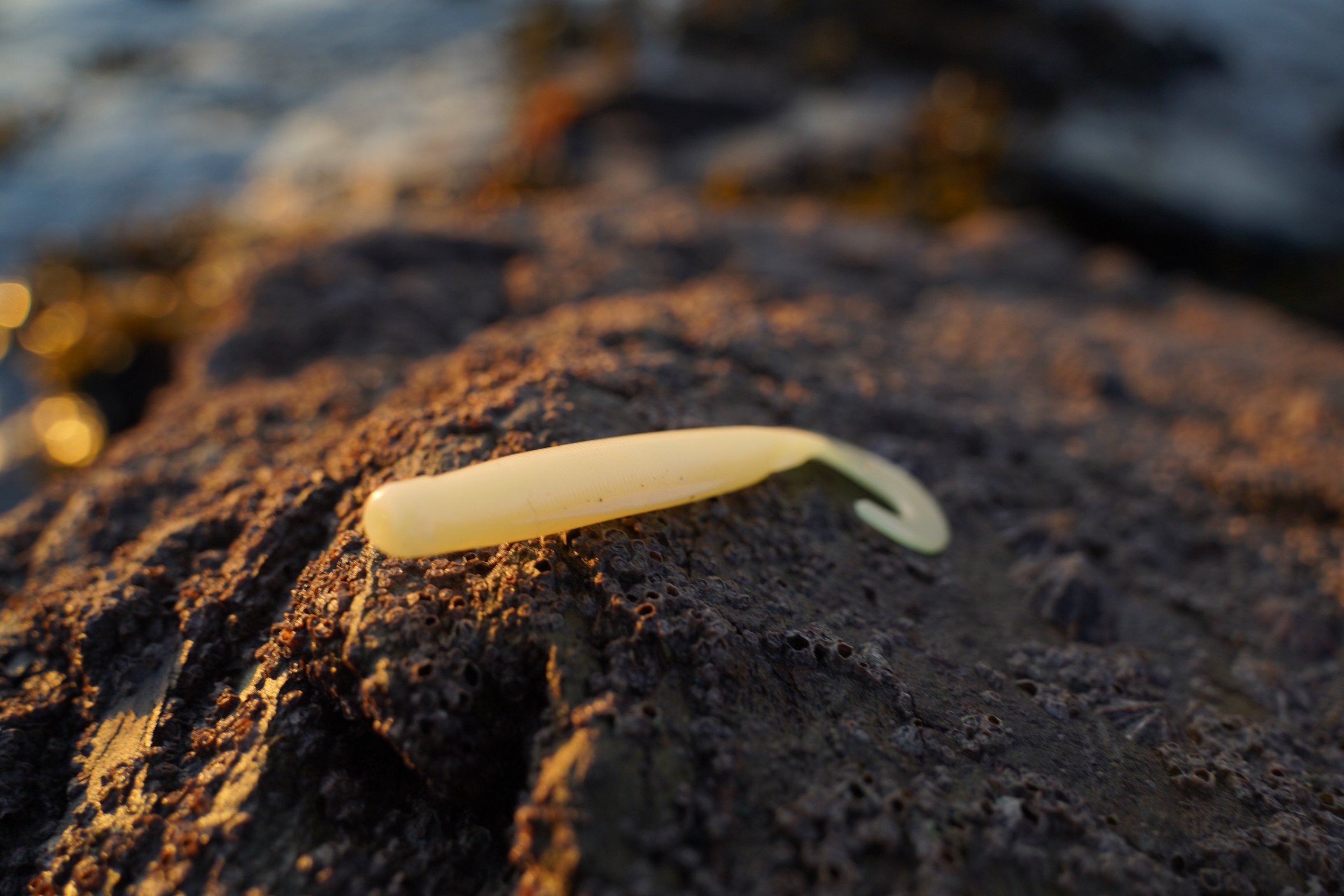
7. Curly tails for mackerel
Curly tails are the worst for getting tail nips that don’t result in hookups. Unless you want to be tantalised (or frustrated) for the whole session just switch to a metal and watch the hookups triple!
Again, curly tails will get a lot of attention from mackerel, they’re just frustrating to fish with for this species.
Mackerel Lures Q&A
What’s the best mackerel bait?
The answer is mackerel because mackerel will cannibalise their own kind and are highly attracted to the slick created by oil in the water as it leaves their own flesh. Other baits like squid and sandeel are great, but the flesh of another oily fish species drives them wild. They are not hugely fussy fish, so whatever you can get is fine. Just avoid the dry baits sold in popular fishing towns – those are crap. You want juicy baits, not dry baits. Worms and squid work but are expensive and offer no advantage.
Why are you using bait anyway? Grab a bass rod to experience mackerel the best way! Or else, read our float fishing guide here.
1. Strip of white mackerel for visibility & the oil slick
2. Sandeel rigged with no hook shank visible
3. Medium length squid strips
4. Worm baits during winter when fish are feeding low in the water
5. Anything that smells of fish and is visible!
What size hooks for mackerel?
The most common sized hook for mackerel is a size 10 but these are considered too large by many. There is a Japanese alternative to traditionally sized mackerel feathers which is far superior, called Sabiki feathers.
What lures to use for mackerel?
The best lure for catching lots of mackerel are mackerel feathers or Sabiki feathers. The most fun way is arguably with a single spinner or a float rod.
What is the best bait for mackerel?
The best bait for catching mackerel is either a sandeel or a strip of mackerel, but lures are also highly effective. I recommend the spinners listed on this page alongside Japanese Sabiki feathers for more hookups. Fishing with baited mackerel feathers allows you to catch mackerel as well as other species.
What fish can you catch with a spinner?
Bass, mackerel, pollack and even wrasse will take spinners and other lures and can be effectively targeted in this way. Presentation and retrieval style is key and varies by species.
What colour lure is best for mackerel?
Mackerels’ natural prey tend to be silvery white and therefore bright, shiny lures are often considered the best. These reflect light which increases their visibility to the fish. It’s often said that the colours of lures are there to catch the anglers rather than the fish!
What’s the best lure for mackerel fishing at night?
The best lure for mackerel fishing at night is either a shiny lure to make the absolute most of whatever light is available or a UV lure which glows in the dark. These lures are the best for fishing at night because they stand out so much more to the fish with their glow. In order for UV lures to work you must shine a light on them for a while first.
Best mackerel fishing lure length?
Mackerel do not have particularly large mouths relative to other species such as bass and pollack and a common mistake is to fish with lures which are too large. Avoid soft plastics with long paddle tails. 2 inches is perfect for mackerel fishing.
How to tie a mackerel feather rig? (diagram)
Mackerel feathers come in packets, and all you need to do is tie one end to your mainline and the other end to an appropriately sized lead weight.
After you’ve taken the feathers out of their packet, you untangle them until they form a straight string. Then you as this diagram of a mackerel feather rig shows, you tie the top loop of the feathers to your mainline. Sometimes there is a swivel at one end, other times a loop. The most common knot used for this is the blood knot. Then, with your mackerel feathers attached to the end of your mainline, you can attach the lead weight. There is a very simple method for doing this. First, push the loop at the end of the feathers through the eyelet of your weight. Now, take the weight and push it through the loop at the end of the feathers. Now the lead weight will hold to the feathers without the need for a knot to be tied.
Now your mackerel rig is ready to go!
What’s the best mackerel rig?
Mackerel feathers remain the best rig for catching a large number of mackerel but are not very good for catching other species of fish. It’s also far more sporting to catch mackerel with single lures and spinners on light tackle, on which they put up a great fight.
Best colour & size jigs for mackerel
Mackerel will hit metals of 4” or more, but the ideal is around 2-3”. The issue is hook size, because some metals have hooks that are designed for bass which have huge mouths in comparison. Colour is not important, but silver has the advantage of creating flash, which imitates baitfish. The options below are good because they come in different sizes with all with the correct hook size for mackerel.
What are the best trolling lures for mackerel?
Mackerel feathers or spinners work great for trolling for mackerel but the most important thing is the weight you use. The faster your boat is moving and the deeper the water, the heavier a lead you will need. For this reason, it’s worth bringing a few different weights to work out what depth is best.
If you are using a hand line off the back of a fairly fast-moving boat in deep water, grab a large lead weight, I’d reach for an 8oz, and a set of mackerel feathers. Some people will go much heavier than this, using 16oz leads.
If you’re in a small dingy with minimal speed, a 3-4oz lead will be fine.
If you’re trolling for mackerel with a rod and want to minimise snags, just forget about the mackerel and put on a Fiiish Minnow in the offshore size so it sinks down – it’s weedless so you won’t get as many snags. Now you’re fishing for bass. Haha, otherwise a casting jig of about 50-80g is great so long as the hooks aren’t too large.
Which brand of mackerel feathers is best? Shakespeare vs. Fladen vs Mustad
Fladen, Shakespear, Mustad and WSB tackle have been in the game a long time, but they will likely be undercut on price by others offering bulk deals without the recognisable branding. It’s a personal choice and most of us fish with what we know, and for me, I grew up using Fladen.
UK Sea Fishing for Beginners
UK Sea Fishing for Beginners You and I live on an island with some of…
The best bass rods | Finding your next stick
The best bass rods | Finding your next stick The most common bass fishing setup…
The Ideal Beginner’s Lure Fishing Set-Up
The Ideal Beginner’s Lure Fishing Set-Up Let’s break down each part of a lure fishing…
Sea fishing starter kit | beginners set up
Sea fishing starter kit | beginners set up First, I will explain the three main…
Finding the best mackerel rods
Finding the best mackerel rods In this guide I will show you a few different…
Lure fishing for bass in the UK | 30 tips
Lure fishing for bass in the UK | 30 tips You can spend a lifetime…

